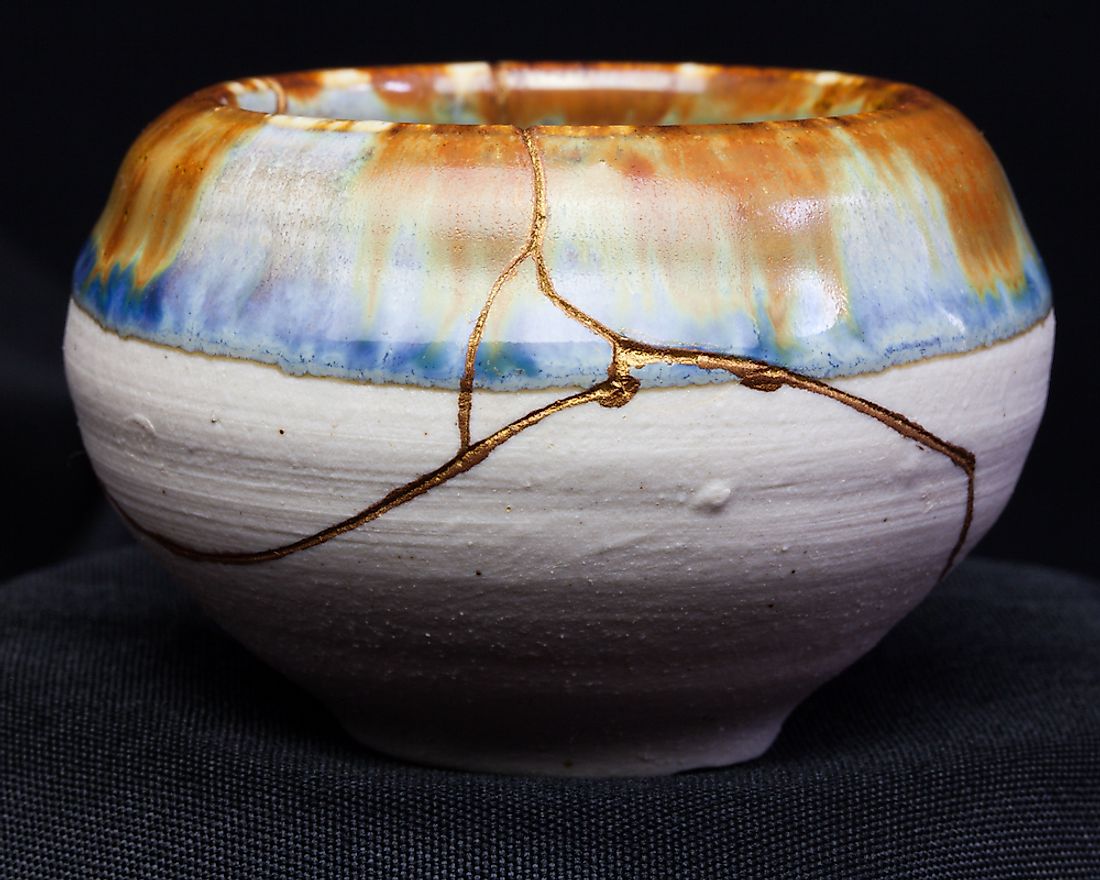The Japanese Art of Kintsugi

There’s a meeting point where three of the highest, most enriching Asian philosophies. When Wabi Sabi, Zen and Mono No Aware come together. They produce this theory of impermanence, this beautiful celebration of imperfection known as the art of Kintsugi.
“Kin” literally translates into golden, while Tsugi means joinery. Together the phrase literally means “to be joined with gold”.
Origins of Kintsugi
In the Muromachi period in Japan, the shogan Ashikaga Yoshimitsu once broke his favorite tea bowl and sent it for repairs in China. He was horrified when the piece returned to him with ugly metal staples and asked his craftsmen to make something far more aesthetically pleasing. This is when the unique method of filling cracks in with gold was devised. The purpose is to not try and hide the cracks in the pottery, but is instead to highlight them, to showcase them in all their splendour. This went on to serve people as the Zen masters applied this to their philosophy. Kintsugi belongs to the Zen ideals of wabi sabi which celebrates everything that is simple, imperfect and aged.
One of the proponents of wabi sabi, Sen No Rikyu (1522- 1599) once was invited to a lavish dinner by a host who acquired lots of expensive, antique tea pots and jars to adorn the table. However, Rikyu was mesmerised by the sight of a mere branch swaying in the breeze outside. This apathy towards the regal spread that he put together for Rikyu left him feeling rather angered and dejected so he smashed one of the jars to the ground. Other guests at the dinner then decided to use kintsugi to put the fragmented pieces together. At the next visit of Rikyu, he unknowingly looked at the same jar, smilingly and complimented it, calling it “magnificent”.
The Art of Precious Scars
The technique of kintsugi suggests many different things. When something is old, it becomes more valuable which teaches us to respect people from older generations, to not treat them as merely liabilities in the world but instead use their wisdom to grow more each day. Kintsugi also reflects a theory of resilience in people.
The process of kintsugi itself is very fascinating. Each ceramic piece is cleaned and dried and first loosely placed around each other to know where each piece belongs. The epoxy is made and with patience it is glued back together, the gold dust brimming while at it. It has to first be held together without leaving fingerprints on it, and it cannot be smudged. With patience and resilience, the pieces come back one by one, as a whole. Beginners can start with two or three pieces first.
Kitsungi and Rebellion
Kintsugi also has a history of political and philosophical resilience. The 16th century tea ceremony masters rebelled against opulence and luxury, the prevailing trend at that time. They instead decided to value simple things that are tried and tested through time and effort. This special affliction towards irregularity in ceramics is often also linked with other Japanese notions like “mottainai”, the regret of wastage and also “mushin”, the will to accept change.
The practice of the philosophy from a psychological ground suggests that when we give in to our vulnerabilities, after our egos or reputations, health and all material associations have gone through some amount of wear and tear, the acceptance and admittance of our errors is an intimate process. It goes on to lay the foundation stone of trust in relationships and helps promote forgiveness. Psychologists call this effect the “beautiful mess effect” wherein despite appreciating other people’s honesty, we often hold back from admitting our own flaws.











